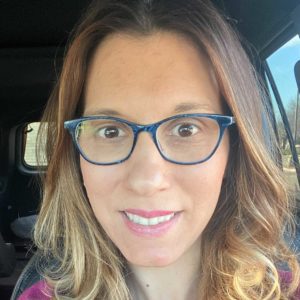Why I Don’t Ignore My Own Learning Anymore


I always knew I wanted to work with young children.
I grew up in a small, culturally diverse town, where everybody knows your name. Generations of families are built there, long-lasting friendships are developed, and some of the most caring teachers molded and inspired us. I wanted to be just like some of those teachers.
During college, I learned about the work of many important theorists whose educational philosophies set the foundation early childhood education was built upon. I completed student teaching and passed my exams. The hard work was over, or so I thought.
Quickly after graduation, I was hired to teach full-day, public preschool in an urban area with children from predominantly bilingual families. Many of my closest friends were bilingual, but I wasn’t. How could I support these children when I only spoke English? Additionally, some of the families had experienced traumas I was unfamiliar with. I felt insecure and unsure of how to support their academic and social–emotional needs.
Where I Went Wrong, Even Though I Didn’t
Mean To
I can now tell you that that first year was the hardest year of my career. I made lots of mistakes that I wish I could go back and fix.
My teaching career began at a wonderful school who adopted The Creative Curriculum and GOLD the same year I was hired. I didn’t understand the power of the curriculum because I never felt I had the time to open a foundation volume and read it, as there were always so many other tasks to accomplish. Furthermore, to me, GOLD seemed like “busy work.” I never understood the purpose it served and the wealth of knowledge to be gained from high-quality observations. I never knew that GOLD was meant to guide my planning and instruction. Had I known this sooner, my instruction that first year would have looked and sounded much different.
Rather than doing what was best for children, I did what was I thought was easiest for me. It takes very little effort to create daily plans when every day is the same and nothing is individualized. I ask, “What’s the weather? How many days in a week? What part of the book is this?” as the children scream in unison, “FRONNNNT COVERRR!”
I realized the theories and philosophies I learned in preparation for becoming a teacher did little to prepare me for the actual job. The theories and philosophies helped me to understand the why, but what I was missing was the how. How could I transform what I had learned into effective daily practice that is developmentally appropriate? My learning shouldn’t have stopped once I graduated college. Teaching young children is as complex as they are. There is no one-size-fits-all approach.
Finding the Inspiration to Improve
It wasn’t until I started attending high-quality professional development and engaging in coaching conversations that I started to see the light. I realized ongoing professional development was the key to my success. We don’t teach the same way we did 50 years ago for a reason. Research into early childhood is forever growing. To support today’s children, we need to understand how today’s children learn best.
What inspired me the most was a Teaching Strategies professional development session I attended led by a woman named Candy Jones. It’s a name I will never forget. Her presentation changed my entire outlook on teaching. It was from her training that I not only learned the why but the how, as well as where I could look to learn more. It was from her compelling session that I finally understood how to reach the bilingual learners in my class. I didn’t need to be proficient in a variety of languages: what I needed to do was utilize my curriculum to put into place effective strategies that were individualized to meet their specific needs. Something as simple as adding visuals or props to storytelling made a world of difference.
Most importantly, it was from her training that I learned about the power of professional development: the only way I could become the teacher children needed and deserved was to continue to be a learner myself. From that day forward, I never again neglected my own learning and desire to improve my practice.
Taking the Initiative to Do Better
Effective teaching is deeply complex work. When attending professional development, the following approach will help you get the most out of your own learning experience.
- Be prepared. Bring any required curriculum materials and handouts. Ensure you have writing tools and a place, whether on paper or digital, that you can revisit to jot down notes.
- Be present. Avoid distractions and silence your cell phone. Participate in activities and ask many questions.
- Be open. Be open to change and new ideas that may be different from your current teaching practice.
- Try something new. Set attainable goals, but not too many at once. Attempt one new strategy in your classroom and, once you feel confident, move on to the next.
As educators, we want to instill a love of learning in children, but first we must instill a love of learning within ourselves. We can begin by no longer ignoring the need for high-quality professional development, understanding the current reliable research in early childhood, and individualizing our planning and instruction based on the guidance within our curriculum. We have the power to become lifelong learners who make a significant difference in the lives of children.
Yes, effective teaching is complex work. With the right tools, resources, and support, it is also deeply fulfilling work. And the first step is to take the initiative to do better, know better, and become better.

Support Teachers Every Step of the Way
With intentional and personalize professional development.


